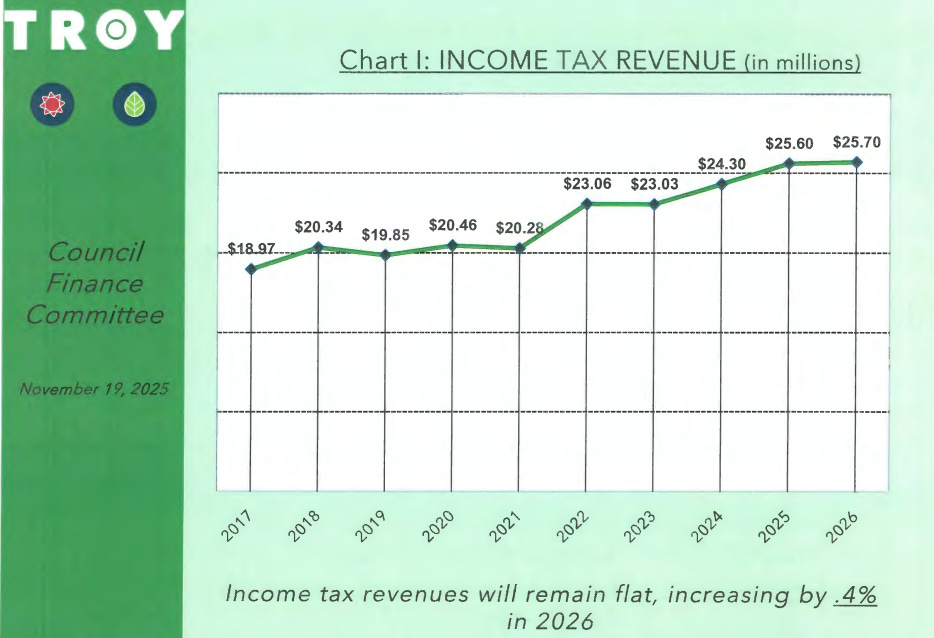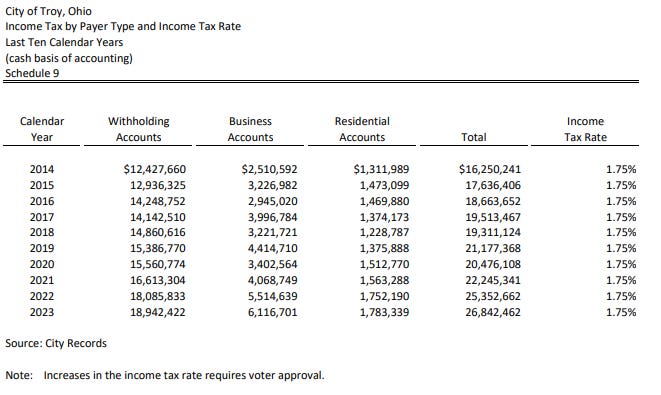A Sausage So Secret, It's Made In the Basement
Vol. III, No. 168 - And a look at the ingredients of this budgetary recipe
We Are Feeding our Neighbors here at Civic Capacity
Throughout November, this publication is giving our readers an opportunity where our readers can support local food pantries. Every dollar received from our “Buy Me a Coffee” Page will be given to New Path Food Pantries.
We started November with a modest goal to raise $750. After the 14th day of our campaign, our community has raised $2,360! Our new goal for November is to raise $2,500. Do you want to be part of this effort, along with 57 other donors to help support our efforts? You can by making a donation here:
Ask any member of City Council and they will tell you that most of the real discussion about legislation happens in committee meetings — this is where the proverbial sausage is made. These are the public sessions where questions are asked and answered, and where council members talk through the resolutions and ordinances that will later come to a vote. The meetings are normally held in Council Chambers and recorded for the public to view on social media. When I served as Council President, I worked to have all committees meet on the same day so that the committee meeting process was more consistent and transparent.
With that, it’s ironic that the most important ordinance Council considers each year—the city budget—is the only committee meeting not held in Council Chambers. Instead, the administration believes those discussions should take place in the basement of City Hall, far away from the cameras. That space is not very accessible and offers little comfort for those who attend, usually seated on the world’s most uncomfortable steel folding chairs.
Next Wednesday, November 19, at 5:15 p.m., the City Council’s Finance Committee will meet in that basement to begin its work on the 2026 city budget. You can view the full budget document here:
After reviewing parts of the budget, several questions deserve public attention. The first chart in the city administration’s presentation states that “Income tax revenues will remain flat, increasing by 0.4% in 2026.” That statement is surprising. Between 2023 and 2024, income tax revenues grew by 5.5%, and between 2024 and 2025 they increased another 5.3%. Calling a drop from more than five percent growth to less than half a percent “flat” seems misleading. If revenue growth is slowing that sharply, something in the local economy may be changing.
Of course, income tax collections do fluctuate from year to year and usually mirror some type of economic event. The same chart shows a drop of 2.4% between 2018 and 2019, and smaller declines of 1.0% in 2021 and 0.1% in 2023. Seeing these data points raises questions about how these numbers are tracked and reported.
A city budget document is always forward-looking—it projects what leaders expect will happen. But it doesn’t necessarily explain what has already occurred. For that kind of reporting, the city issues an annual financial statement known as the Comprehensive Annual Financial Report, or CAFR, which is filed with the Ohio Auditor of State and made available to the public.
To understand these tax revenue changes better, I looked at the city’s CAFR data. Though the most recent report (covering 2024) has not yet been released, but earlier years still offer a useful context. According to the CAFR, between 2018 and 2019, income tax revenue actually rose by 12.8%. That stands in sharp contrast to the 2.5% decline shown in the current budget presentation. The CAFR lists 2019 income tax collections at $21.18 million, while the budget presentation reports $19.85 million for the same period—a difference of nearly seven percent. That’s not a minor accounting gap. It suggests either a serious reporting error or a fundamental difference in how “income tax collections” are defined across documents.
These revenue questions matter. The city’s administration is already concerned about potential reductions in property tax collections and the potential impact of assessment changes around the Public Square. If income tax revenue is growing at only 0.4%, after several years of stronger gains, it could signal a broader slowdown in local business activity or employment. At the very least, council members and residents deserve a clear explanation of what’s driving those numbers. Perhaps the most important question to be asked is why the most important fiscal discussions continue to happen out of sight, in a basement room instead of in the council chambers where they belong.
Participate in our November Community Survey!
Back when this project was kicked off over two years ago, this newsletter was imagined as a helpful tool to not only help have our residents understand their community, but also to receive feedback and get ideas on how residents perceived where our hometowns was headed.
In order to achieve that goal, the decision was made to release a small survey that would ask residents their thoughts and feelings every two months. Every month seemed excessive, yet, once a quarter didn’t seem quite frequent enough. The idea was to help create a picture of the sentiment in the community and measure that sentiment over time.
So, throughout November, you can participate in our survey to give your thoughts and feelings on the direction of your hometown!
You can access the survey here:
Thanks for your time and your participation! It is greatly appreciated!
A New Handbook to grow Civic Capacity!
Recently, we created a new digital handbook, “The Citizen’s Guide to Public Records”. This handbook is designed to help residents have a better understanding of public meetings and meeting records. It’s filled with templates, ideas and other information that will open a new world of public affairs.
Also, if you have ideas for future handbooks, please let us know at pinnaclestrategiesltd@gmail.com.
Want to Learn More About Troy’s Businesses?
Our publication has recently released our September 2025 Economic Abstract, the most comprehensive and up-to-date report on the businesses and industries in the City of Troy. For those that want to understand our community’s business and industries, this is a must-have report.
Thank you to our New Media Partners!
Recently, many of our stories has been showing up on the local news website, www.mymiamicounty.com. We are grateful for the good folks for sharing our work with their audience and we would encourage our readers to check them out at their website!
Our publication would also like to recognize the good work being done at www.piquanewsnow.com. Piqua News Now is a new web-based news and information site for the Miami County area, with a specific focus on Piqua!
In addition, the good folks at Piqua News Now have started a new, 24-hour streaming YouTube channel. This channel is awesome with continuous weather updates and more importantly, it provides a 24-hour audio feed from county wide dispatch. Check it out here!
Also, thanks for reading today’s Civic Capacity Newsletter! Please feel free to share this information with your friends and neighbors.
Also, please consider subscribing to our work. If you are a free subscriber, please consider becoming a paid subscriber. For less than $1 a week, you can get timely and conversational updates about the decisions that are impacting your hometown!





